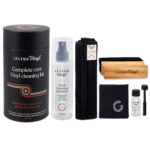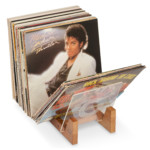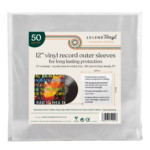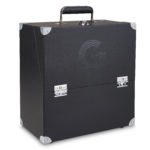
1. CUTTING YOUR MUSIC ONTO A LACQUER
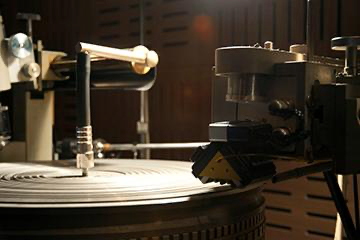
Using a lathe, engineers begin with a test cut to ensure everything is working properly. This cut is inspected under a microscope to ensure it is in pristine condition.
When the recording is started the sapphire tipped cutter etches the sound onto the lacquer disc. The music is recorded in real time from start to finish, this creates one continuous grove in the lacquer.
Making the music fit can sometimes be challenging. Heavy bass creates wider groves and can reduce the recording time. This is also true if the levels are too high. As a general rule, the longer a side is, the quieter the record will be. Our guideline for maximum side length is 20 minutes for a 12″ 33 rpm record and 14 minutes for a 12″ 45 rpm record, but again these times can vary depending on the music provided.
Once the lacquer is recorded, it’s far too delicate to play. It has a finish similar to that of nail polish. The vinyl “lacquer has solely been produced to act as a mould.
2. CREATING THE METAL STAMPER
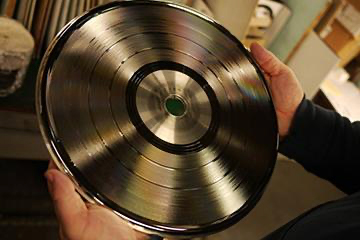
The lacquer is sprayed with tin chloride and liquid silver. For rigidity the metalized lacquer is dipped into a nickel bath, where an electro charge fuses the nickel to the silver.
The metal layer is removed from the lacquer creating our 12.5″ metal stamper to press from.
3. TEST PRESSES
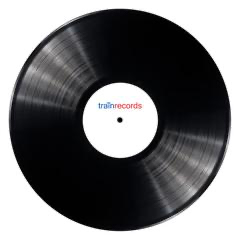
From the newly minted metal stamper white label test presses are produced. This gives the manufacturer a chance to listen to the final product before committing to production.
4. LABELS
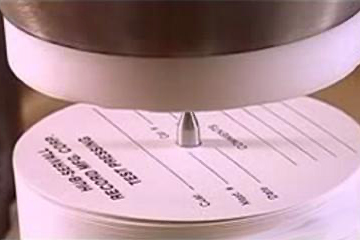
Most people don’t realize but the labels are actually applied within the press. After your artwork has been created, supplied and approved, the labels are printed, cut and ready for the next step.
5. VINYL MANUFACTURING
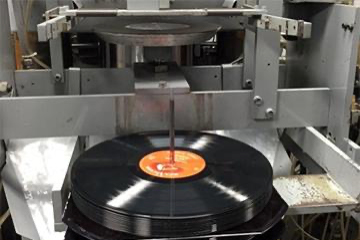
Black polyvinyl chloride pellets are fed into a hopper, the liquefied pellets are fed through an extruder creating hot rubbery patties called “biscuits”.
Placing the labels on the top and bottom of the biscuit the 2 stampers (Top – Side A and Bottom – Side B) press down applying 100 tons of pressure at 200 degrees celsius creating the vinyl record.
There is a quick cooling cycle that solidifies the vinyl and bonds the labels. Any excess vinyl is trimmed off the edges and the record is ready.
At that is the process of making vinyl!

